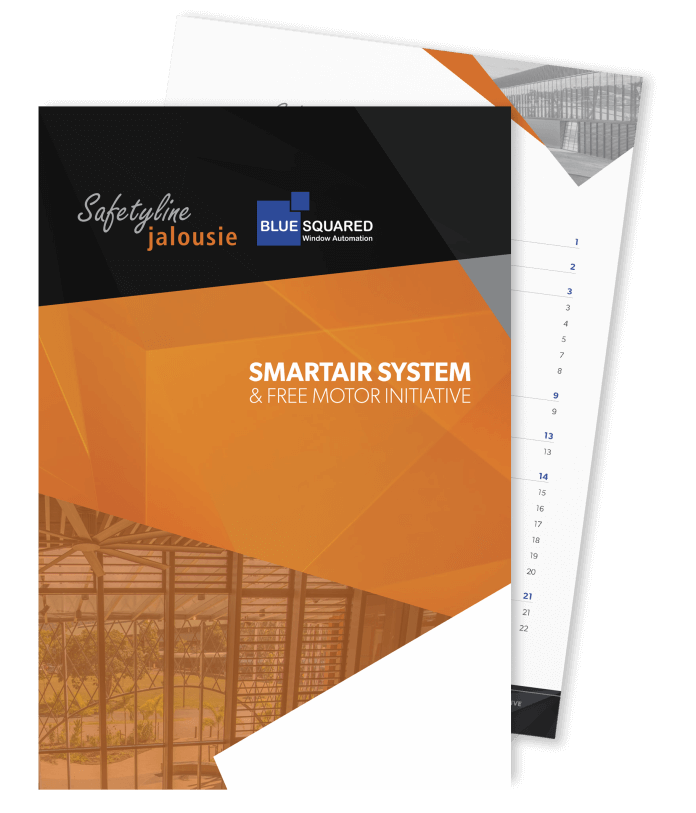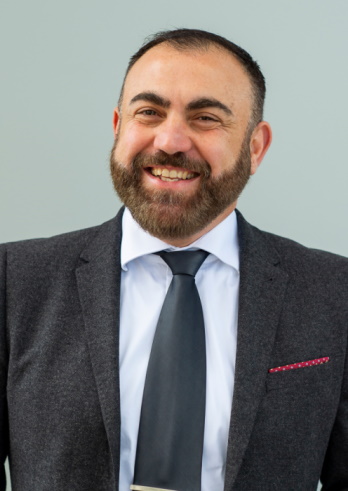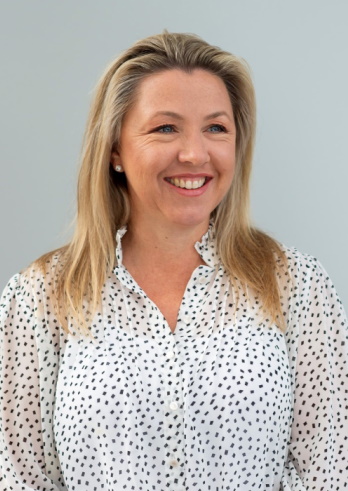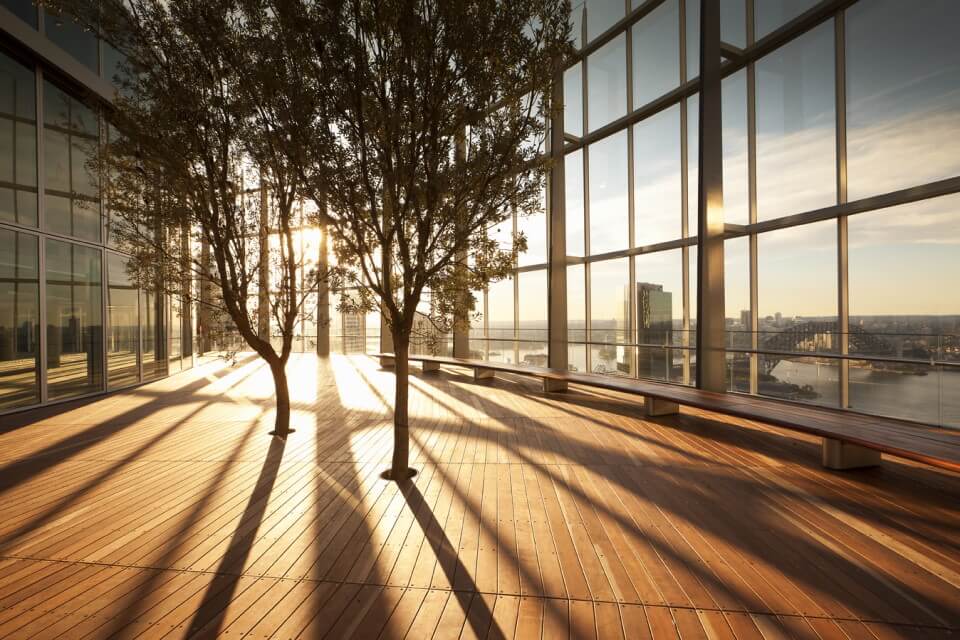
Sustainability in building has become a hot button topic. Increased awareness of environmental issues plays a large part in that. The Australian building industry has responded well.
We live in a world that cares a great deal about the environment.
More people than ever understand the concept of climate change. Moreover, most recognise the devastating effects that climate change may have. This has led to many looking for sustainability features in the buildings that they buy.
There are many examples of sustainability in building. These include the use of solar panels to generate energy and water recycling systems. Modern buildings often use such features. This is both to become more energy-efficient and to attract knowledgeable buyers.
We’ve seen the effects all over the world. Most countries now place a focus on sustainability for new buildings. Australia is no different. In fact, the Green Star rating program exists to track sustainability in building. The aim is to create a better Australia. Thus, it encourages the use of better building materials and techniques.
Many buildings make sustainability a key selling point. Going green can attract buyers. The six-star rated building at 1 Bligh Street shows that. Safetyline Jalousie louvre windows also work on buildings that consider sustainability of critical importance.
Case Study – The Serrata Building
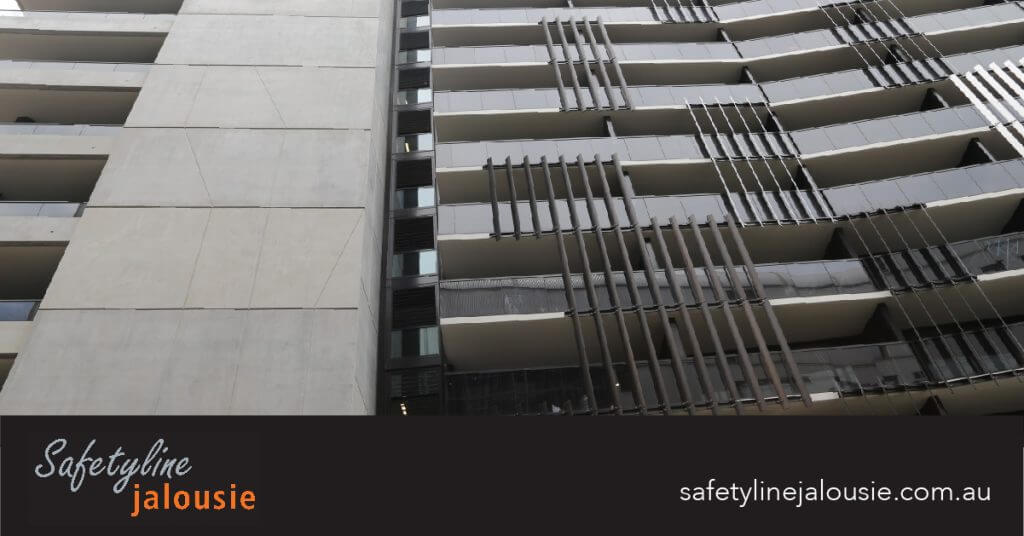
The Serrata Building is a monument to sustainability in building. It is also part of the “Second Decade of Docklands” initiative.
First, let’s examine the initiative itself. The aim is to make Melbourne’s Docklands region a more welcoming place for the community. New infrastructure is in place to allow for that. Moreover, there are several plans to build public spaces and pedestrian walkways. This will make it friendlier to residents and reduce the reliance on vehicles.
Upon completion, the docklands will become something of an urban hub. It will contain vibrant public spaces and use the latest in urban design trends. Several buildings fall under this initiative. These include the Docklands Community Hub and the Library at the Dock.
Serrata is also one of those buildings.
This stunning tower block is a 15-storey mixed-use building. It contains 144 residential apartments. Each has access to outdoor spaces as standard. The building also contains several retail outlets on the frontage. A direct connection to the nearby park only adds to the appeal.
Moreover, it is a more intimate building than many found within the Docklands. This all comes down to the interior’s “beating heart”. Developers Hayball wanted to make the building as inviting as possible. The use of well-designed lighting systems achieved that. The use of modern technologies in construction also helped.
The “glimpses in-between” areas of the building’s interior stand out. Various sections of the building open up to the exterior space. Those inside can see plenty of activity and green areas from these spaces. This makes the building’s interior more attractive.
Of course, there is also a concentrated focus on sustainability. Serrata finds itself among some of the greenest buildings in Australia. The building itself carries a 4-star Green Star rating. Plus, it is an innovative building. It’s the first to use the multi-residential tool from the Green Building Council of Australia.
Safetyline Jalousie takes great pride in being a part of this project. Our louvre windows helped the building to achieve its exceptional Green Star rating.
What is Green Star?
To understand the importance of this project, you must understand the Green Star rating initiative.
The Green Building Council of Australia (GBCA) operates the Green Star initiative. It’s a ratings system. The more sustainable a building, the higher its Green Star rating. The system ranks up to a maximum of six stars. Only the building at 1 Bligh Street has achieved the 6-star rating.
The Green Star program has three goals:
- Certification: Green Star provides certification to buildings that meet its standards. This is something of a badge of honour. A good Green Star rating shows a commitment to sustainability in building design.
- Advocacy: Green Star advocates for the industry to move beyond its current practices. It recognises that current building codes don’t always take sustainability into account. It hopes to change this through its advocacy. At the very least, it hopes to encourage those in the industry to go further than current standards ask for.
- Education: Green Star operates several courses for those in the industry. These courses highlight the importance of sustainable building design. They range from foundational courses through to eLearning opportunities. Green Star also operates webinars, conferences, and site tours.
Through this work, the GBCA has become the leading sustainability organisation in Australia.
It currently boasts around 700 member organisations. Moreover, Green Star has certified almost 1,800 projects in recent years. All told, about 450,000 people live in Green Star certified buildings.
The GBCA often creates initiatives to further its goals. Among the most recent of these is its 2016 strategy. This initiative aims to create a carbon positive industry through sustainable building design.
To do this, the strategy offers four goals:
- People. The strategy encourages the creation of sustainable cities and communities. This improves the quality of life for the people living within those communities.
- Planet. It aims to promote a carbon positive industry. As a result, the GBCA creates a healthier planet for future generations.
- Region. The strategy will increase the GBCA’s influence in many regions.
- Industry. As always, the GBCA hopes to have a transformative effect on the industry. Its 2016 plan will help it to get its message across to more people.
Most buildings don’t carry a Green Star rating. That’s because the initiative has an in-depth certification process.
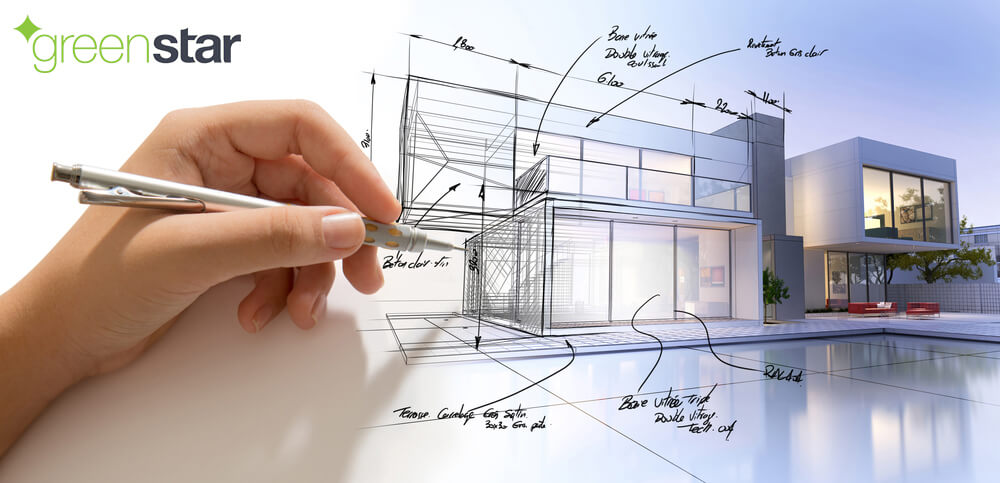
Green Star Certification
Green Star recognises the hazards that our built environment creates. It points to buildings as the leading cause of greenhouse gas emissions.
Its certification program aims to counter this. And it works. Green Star-certified buildings produce 62% less greenhouse gases. They also use over 50% less potable water than regular buildings. Moreover, they recycle most of their construction water and use less electricity.
But certification isn’t an easy process. You must work closely with Green Star to get a strong rating.
The GBCA offers some guidance in this area. It recommends following these steps to get certified:
- Step 1 – Registration. It’s as simple as it sounds. You must register your project with Green Star to have any chance of getting a rating. Unregistered projects cannot achieve a Green Star rating.
- Step 2 – Documentation. This involves two processes. First, you must familiarise yourself with Green Star’s documentation. Find out what it requires from you. After that, document every aspect of the design and construction. Align your documents with Green Star’s and you have a better chance of achieving a rating.
- Step 3 – Submission. Submit your documents in a timely fashion. You can do this using the Green Star portal once you’ve registered.
- Step 4 – Assessment. All you can do here is to wait. Green Star uses independent experts to assess your project. They check your documentation and assign a rating based on the information available. They may also provide feedback. This can help you to achieve a higher rating, if needed.
- Step 5 – Certification. You receive your rating. This verifies that the building meets Green Star’s requirements.
Your Green Star rating spreads across four distinct categories:
- Neighbourhoods and Communities
- Design and Construction
- Interiors
- Performance
Each has its own requirements that your design must meet.
But you don’t have to go it alone. Each of these categories comes with in-depth documentation. Green Star provides templates, scorecards, and general information. This should help you to understand both the requirements and the submissions process.
There’s no denying that shooting for a Green Star rating requires a lot of work. But it’s worth it. The Green Star initiative aims to make the Australian building industry better. Plus, you enjoy a host of benefits with sustainable building design.
The Benefits
The most immediate benefit is an obvious one. Sustainable building design reduces your carbon footprint. The climate change issue is at the forefront of many people’s minds. Sustainability means your building produces fewer greenhouse gases. As such, it doesn’t have as detrimental effect on the environment as other buildings.
This means that you’re working to maintain the planet. Moreover, clients will see this. Sustainability has become a key selling point for many businesses. Going green means attracting customers who care about the environment. As a designer or builder, going sustainable means you’re helping businesses. A company may be more willing to buy your building. That’s because they can see the branding potential in going green.
But there are benefits beyond the altruistic for the building’s owners. Sustainability reduces the costs of operating a building. You need only look at Green Star’s statistics for that. Electricity and utility bills fall because of the technologies used in the building.
These lower long-term costs offer other benefits. They ensure that you get a better return on your investment. Some people balk at the idea of sustainability in building. They believe that the technologies used cost more money. The initial investment may be a touch higher. But the long-term savings usually exceed any increase in early costs.
Finally, you’re creating healthier places for people to live and work in. Residential blocks enjoy higher tenant interest. Commercial blocks create healthier conditions, which leads to fewer people going off sick. Fewer sick days and healthier workers lead to higher productivity levels.
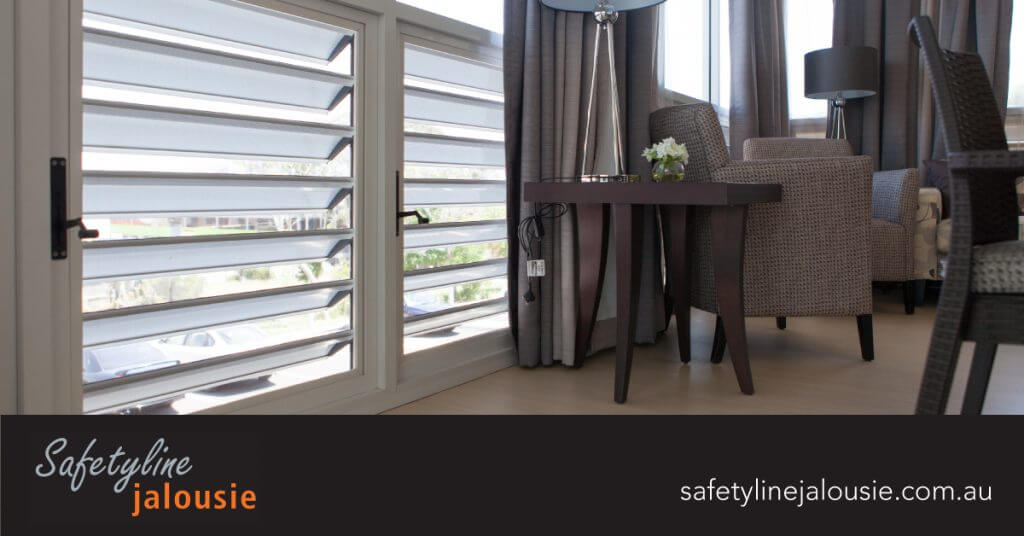
Why Louvre Windows?
We mentioned at the top of the article that the Serrata building uses louvre windows. Those looking to build sustainable buildings should always consider these types of windows.
Safetyline Jalousie louvre windows carry certification from several organisations. These include the Australian Windows Association and Window Energy Rating Scheme. Such certifications show their viability for sustainable projects. We also provide energy rating information on request.
These windows also use superior glass systems. This means you’ll see a reduction in heat ingress.
Finally, they help you to reduce your need for air conditioning. There’s an enormous cost that comes with running air conditioning. Plus, it’s not energy efficient. Louvre windows allow you to control airflow into a building. This reduces the need for air conditioning.
Conclusion
Sustainability is a key concern in the modern building industry. Australia has become a world leader in this sector thanks to programs like Green Star rating.
Builders and designers must focus on the materials that they use. This allows them to create more sustainable designs. The use of louvre windows may help you to achieve a high Green Star rating.
Do you want to find out more? We recommend that you do the following:
- Read more about our louvre window technical specifications.
- Keep track of industry trends by checking out our blog.
- Get in touch with a Safetyline Jalousie Business Manager to find out more about our windows.
References:
Green Star Rating System – GBCA
Green building Industry capability report – Australian Trade and Investment Commission

